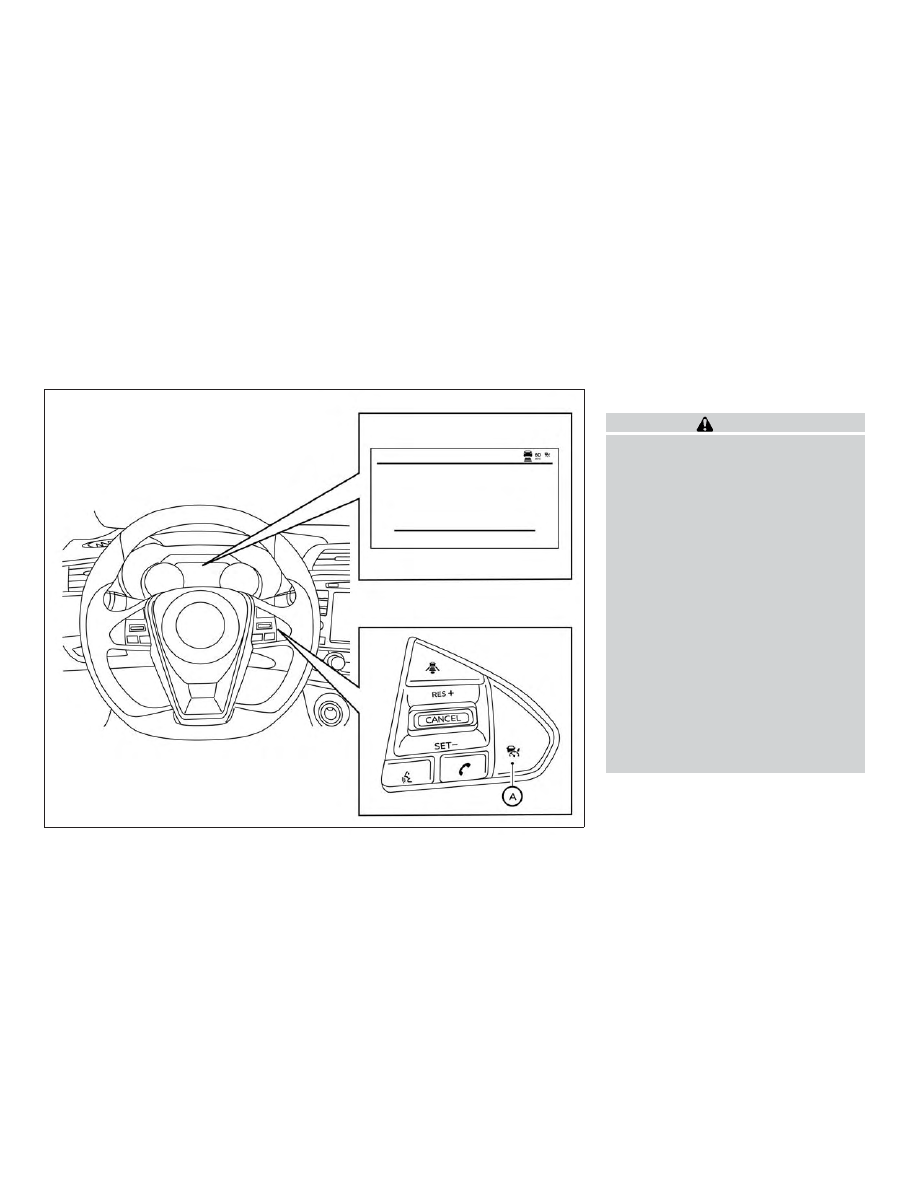Nissan Maxima (2020 year). Manual - part 19

䊊
A
ICC switch
WARNING
Failure to follow the warnings and in-
structions for proper use of the ICC sys-
tem could result in serious injury or
death.
∙ The ICC system is only an aid to assist
the driver and is not a collision warn-
ing or avoidance device. It is the driv-
er’s responsibility to stay alert, drive
safely, and be in control of the vehicle
at all times.
∙ Always observe posted speed limits
and do not set the speed over them.
∙ Always drive carefully and attentively
when using the ICC system. Read and
understand the Owner’s Manual thor-
oughly before using the ICC system.
To avoid serious injury or death, do
not rely on the system to prevent ac-
cidents or to control the vehicle’s
speed in emergency situations. Do
not use the ICC system except in ap-
propriate road and traffic conditions.
LSD3427
INTELLIGENT CRUISE CONTROL (ICC)
(if so equipped)
5-60
Starting and driving